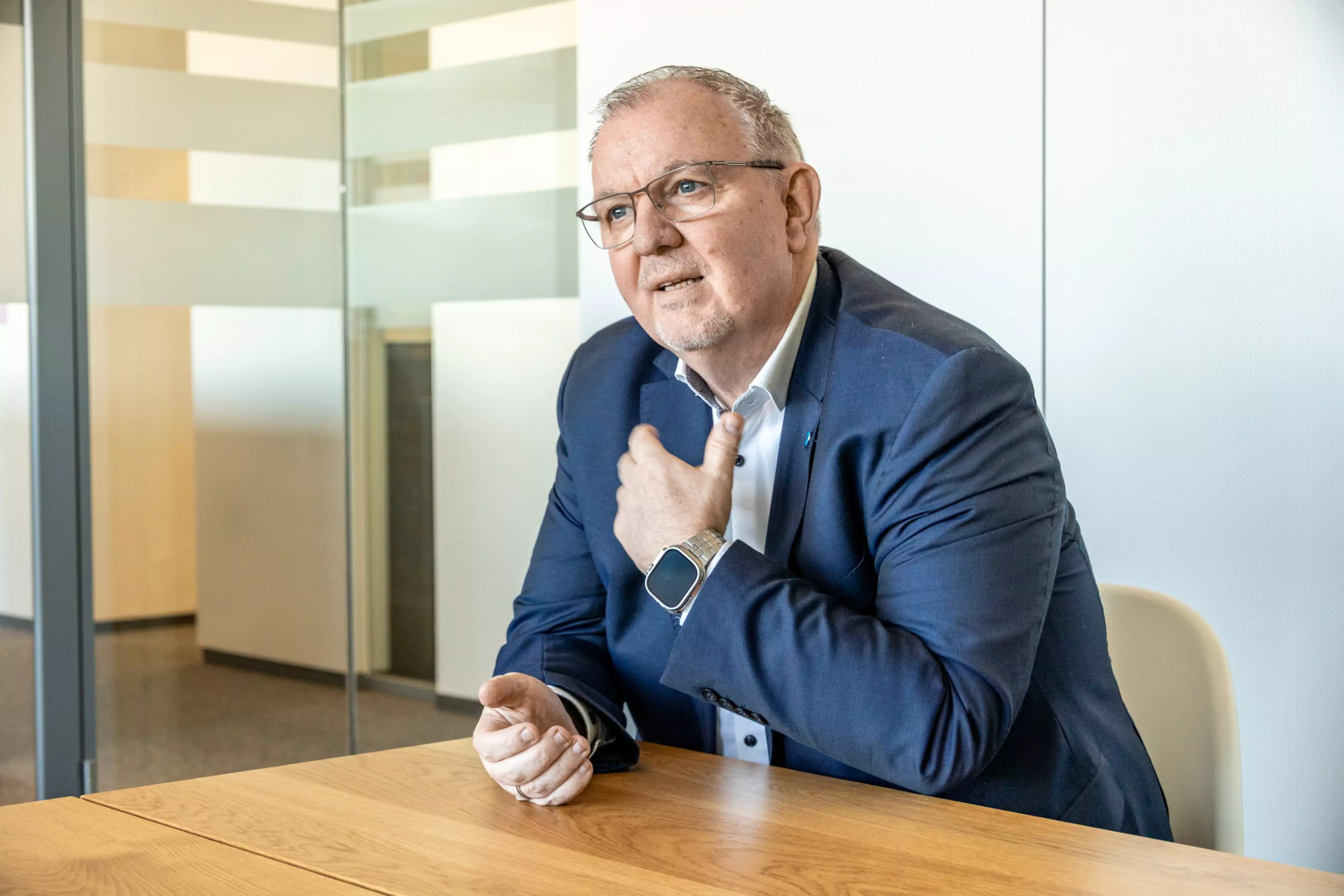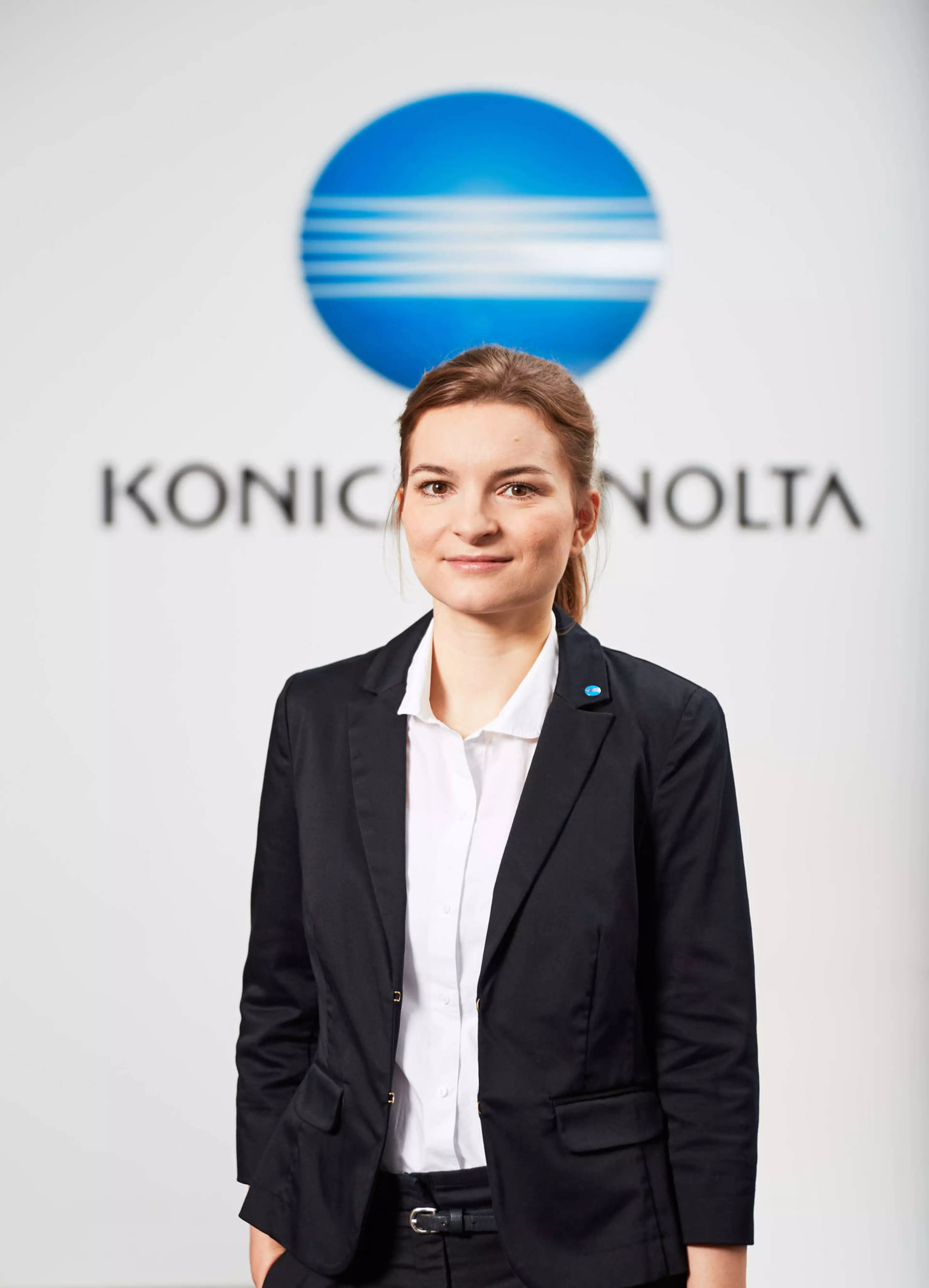In 2005, Konica Minolta introduced the bizhub brand for its
MFPs (multifunctional printers) in Europe and is therefore proudly celebrating its 20th anniversary this year. As the centralized hub for print, copy, faxing and scanning, Konica Minolta’s MFPs have always played an important role in the workplace and have evolved with the rapidly changing needs of the contemporary office. The name “bizhub” was coined by combining “biz” an abbreviation for “business” with “hub” meaning a center of a place or activity and a network relay based on the concept of “putting you in the center of business.” In this interview, Olaf Lorenz, General Manager International Marketing Division at Konica Minolta Business Solutions Europe, explains how the workplace has changed over the last 20 years and how Konica Minolta has adapted its MFPs accordingly.
Olaf, how does the office of 2005 compare to the office of today?
Olaf: The office of twenty years ago wouldn’t be completely unrecognizable today. It featured desktop computers and laptops using the long-standing Microsoft Windows XP platform, paired with more basic Internet connectivity, email, and early versions of instant messaging.
Many offices still relied on landline telephones for reliable voice communications. Mobile phone technology was still fairly basic compared to modern expectations. Mobile devices as we take them for granted today were still in their infancy: Handheld
BlackBerry devices, which were introduced in 1999, were groundbreaking at the time for their mobile connectivity abilities, but the modern app-driven smartphone
only arrived in 2007 with the first Apple iPhone.
Because lots of office technology was physically tied to traditional office space it was more of a challenge to offer access to IT services outside offices, using a shared desk whilst visiting other offices may have involved using a wire cable for connectivity to Laptop computers, and communications such as email usually required sitting at a workstation desk. The flexibility of modern remote and hybrid working was virtually impossible for most workers to use.
This is a stark contrast to today, where offices are equipped with advanced technologies such as AI-powered tools, cloud computing, and smart office solutions. Collaboration tools like video conferencing and virtual meeting platforms are essential, commonplace, and highly affordable. This powers the highly flexible hybrid working models that support more choices for workers and help to drive productivity by offering full office services from home and remote locations, without the need for time-consuming commuting.

What have been some of the key workplace technology and practises changes in the last 20 years?
Olaf: Undoubtedly one of the biggest shifts has been the advent of Cloud Computing, which was pioneered by the likes of
Amazon Web Services (AWS) in 2006, allowing businesses to store and access data and applications over the internet. Cloud Computing has also enabled the development of office platforms like
Microsoft’s Office 365 in 2011, while also giving companies more agility, scalability and cost efficiency because they no longer need to invest heavily in physical servers and infrastructure. The aforementioned adoption of smartphones since the first Apple iPhone in 2007 in tandem with Cloud Computing was a revolution that made mobile working as we know it today possible in the first place.
These technological revolutions were also necessary against the backdrop of geopolitical changes and changes in society in general. Just think of the
2008 Global Financial Crisis, which forced companies to massively reduce their costs.
Or the Covid-19 pandemic since 2020, which accelerated the shift to remote work and led to a more distributed and flexible workforce. Let’s take the example of hybrid working: Microsoft Teams, for example, was introduced in 2017 but has only experienced a real boom since the pandemic resulting in more than
320 million users worldwide today.
In its 2022 statement, the EU refers to the significant increase of malicious cyber activities in the context of Russia’s aggression against Ukraine. The issue of IT security in the workplace has become more important than ever. Cloud computing in particular helped to increase the level of security.
What we also saw over the last years was the greater promotion of diversity, equity, and inclusion (DEI) in the workplace, driven by a significant change in mindset influenced by movements such as ‘Black Lives Matter’ and ‘Me too’ campaign during the 2010s – although recently there has also been a
growth in anti-DEI sentiment as well.
Or take
‘The Great Resignation’ in 2021-2022, which resulted in a shortage of skilled labour. This saw an increased focus on talent retention by concentrating on employee wellbeing and creating a positive workplace culture that aligns with employees' values and aspirations.
The shortage of skilled labor has also accelerated the revolution of Generative AI as a means of utilising existing human resources more intelligently and increase productivity.
Another example is
the Paris Agreement of 2015 in response to the escalating Climate Emergency. As a result, the topic of environmental responsibility became increasingly important in companies, with energy-saving technologies and the use of recycled materials becoming even more important. Paper-saving processes also gained more attention as a result, although the ‘
Paperless Office’ was not new in itself.
In addition to environmental reasons, practicality and cost savings also played an important role for the switch from paper documents to electronic ones and gave Enterprise content management systems a huge boost.
In addition, during the last two decades the EU has also introduced a whole series of legislation that has affected the workplaces across Europe. For example, the
Working Time Directive, which was introduced in 2003, to protect workers' health and safety, established a maximum working week of 48 hours, including overtime, and put in place the requirement of at least four weeks of paid annual leave. In a similar vein, the
2010 Parental Leave Directive provided parents with a minimum of four months of parental leave, promoting work-life balance and gender equality in the workplace. On a business operations level, one of the biggest changes in data regulations was the
2016 General Data Protection Regulation (GDPR), as it had a profound impact on data protection. The
Network and Information Security (NIS) Directive was also introduced in 2016 to boost the overall level of cybersecurity across the EU. This has also since been replaced by
the NIS2 Directive that was introduced in 2023 to strengthen cybersecurity requirements by setting higher standards and expanding the scope to more sectors and entities.
How have Konica Minolta’s bizhub devices adapted to these developments?

Olaf: The Konica Minolta bizhub range has continually adapted and evolved to meet the evolving needs of businesses in the wake of all these changes.
In 2009 and 2010 we introduced a range of scanning software that, together with the bizhub devices, was designed to help businesses realize the ‘Paperless Office‘, by offering
powerful scanning and processing capabilities to make this quick, reliable, and easy to achieve.
In 2011, we introduced a solution to enable
mobile printing with our bizhub devices for increased workforce flexibility which has proven valuable for hybrid working. In addition, our
bizhub SECURE concept was introduced in the same year to protect bizhub devices from cyberattacks, which was expanded in 2019 with the introduction of Bitdefender Antivirus.
In 2012, we launched IWS (Internal Web Server), which allowed us create connectors for the connection of our MFPs to the cloud. With the launch of
Marketplace, we simplified the way how our MFPs scan to the cloud and print from the cloud repository, without the need of any on-premise servers. In general, the Marketplace, like smartphones, provided access to a whole range of apps that were accessible via MFP panels.
2012 was also the year in which resource saving was given a central role in the devices: we used recycled plastics in our bizhubs for the first time. We also improved our Simitri® toner so that it could be fixed at a lower temperature. This reduced the power consumption of the fixing unit by around 10% compared to previous models. We continued this with the bizhub i-Series, which was launched in 2019. Most of the bizhub i-Series devices had a lower TEC value than their predecessors. This was due to our new Simitri® V toner and a new fixing unit at the time, which enabled us to reduce the fixing temperature by around 15°C compared to previous models. The reduction in power consumption has resulted in up to 25% less CO₂ emissions in operation compared to previous models. Finally, in 2023, we launched our
bizhub Refreshed programme in Europe to refurbish bizhub devices after their first life cycle.
An inclusive workplace must provide equal access to all people, regardless of age, disability, or other factors. This is why Konica Minolta committed to
Universal Design 20 years ago with the introduction of the new bizhub brand. The bizhub range offers ergonomic paper trays that can be pulled out with the minimum of effort, large touchscreens that can be tilted to any angle, and color coding that clearly indicates critical machine parts to avoid potential harm to the user.
We have just talked a lot about the demands of society and the economy and how the workplace and the bizhub series have adapted to this. But what I would also like to emphasize is our innovative design, for which we have received several awards over the last 20 years, such as the Red Dot Award or the Good Design Award. At Konica Minolta we were of the opinion that workplaces should not only function technically flawlessly but should also be visually appealing and easy to use so that employees feel comfortable. In 2007, for example, we introduced a new stylish body with a black and white Infoline Design, which was unique in the industry at the time, as most devices then were simply gray. And we had also changed the MFP panels from simple black and white user interfaces to much more modern user interfaces in color.
What does the future hold for the workplace?
Olaf: Our bizhub devices include for instance the
Intelligent Media Sensor. This automatically determines the paper type using sensors and algorithm developed on the basis of machine learning and allows the optimal printing conditions to be set for each type of media, so that they can be printed with the best print quality.
We are currently working on a number of ways to make document processes even smarter based on AI, and our bizhub devices are an important part of this.
Looking back over the last two decades it’s clear that technology must always evolve to match the needs of people and businesses, and our bizhub series is a great example of this. They are an integral part of numerous business processes and have proven themselves time and time again, primarily because they have evolved to meet complex challenges. We will continue to strive to design them in such a way that they meet the future requirements of the digital workplace.

20 Years of bizhub
With technological, social, environmental and generational shifts impacting on work priorities, the workplace of today is evolving. And so too is the Konica Minolta bizhub i-Series of multifunctional printers (MFPs). The enhanced bizhub i-Series offers a range of new features and combines ease of use with powerful security for a print solution without compromise. Empowering employees to achieve their objectives and helping them thrive. The new and improved Konica Minolta bizhub i-Series range comes with both built in, so you can empower your business without compromise.
For more information about our bizhub i-Series, please click below.




